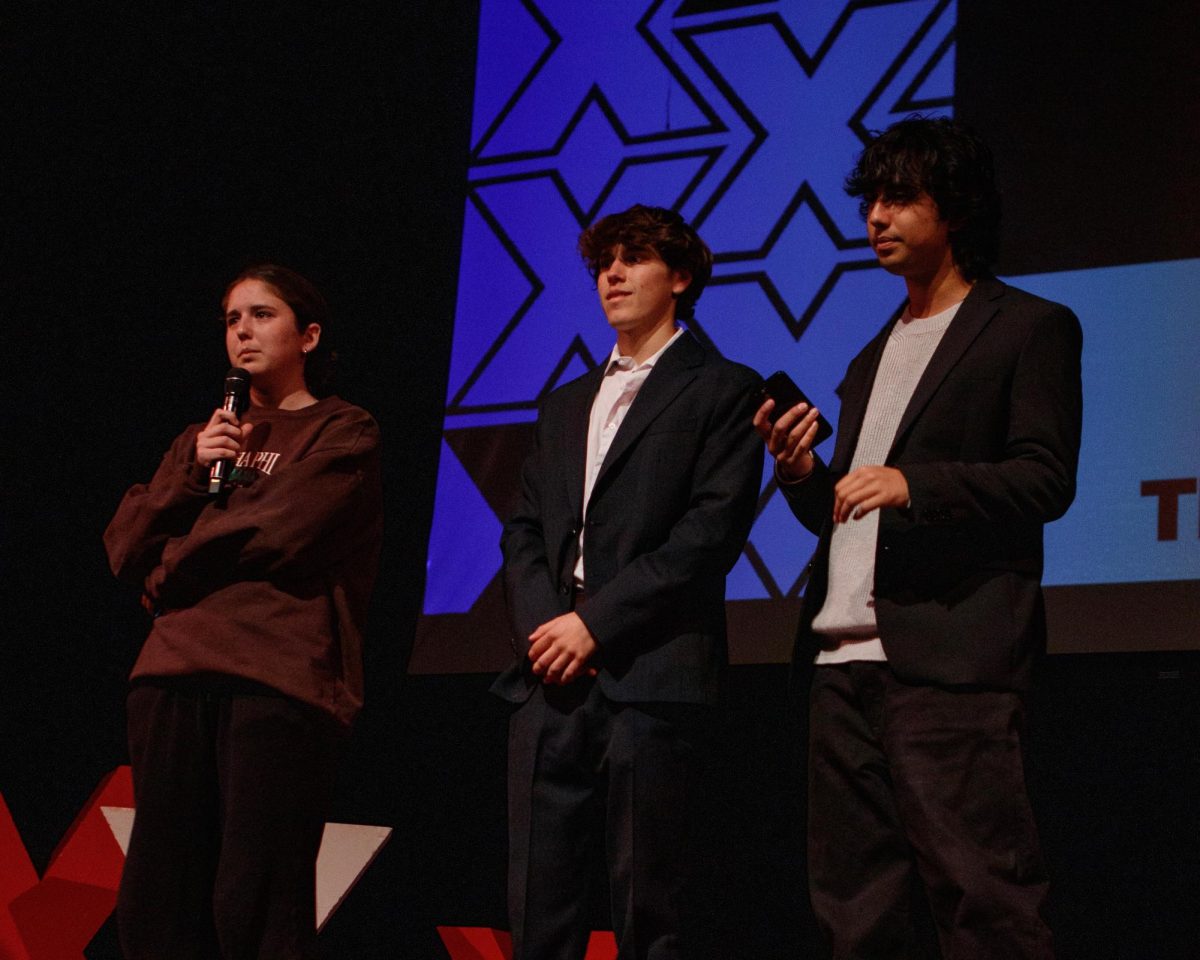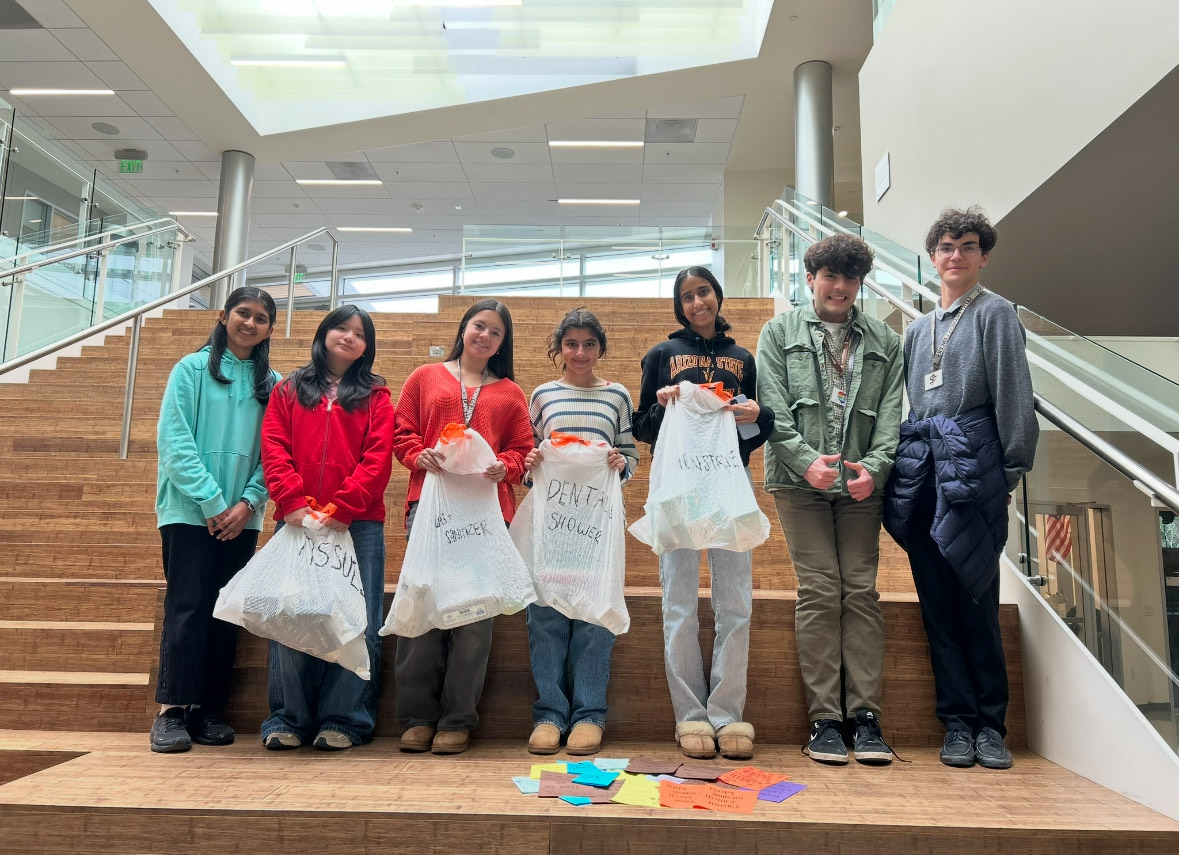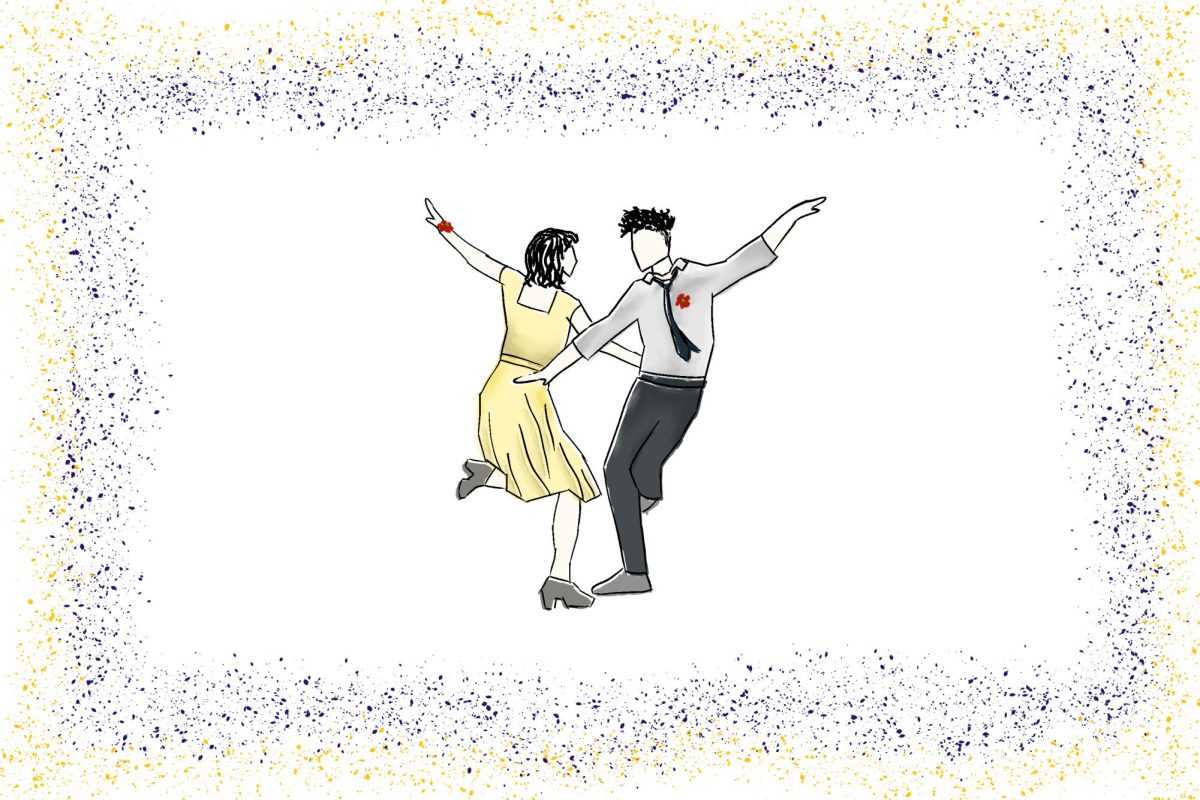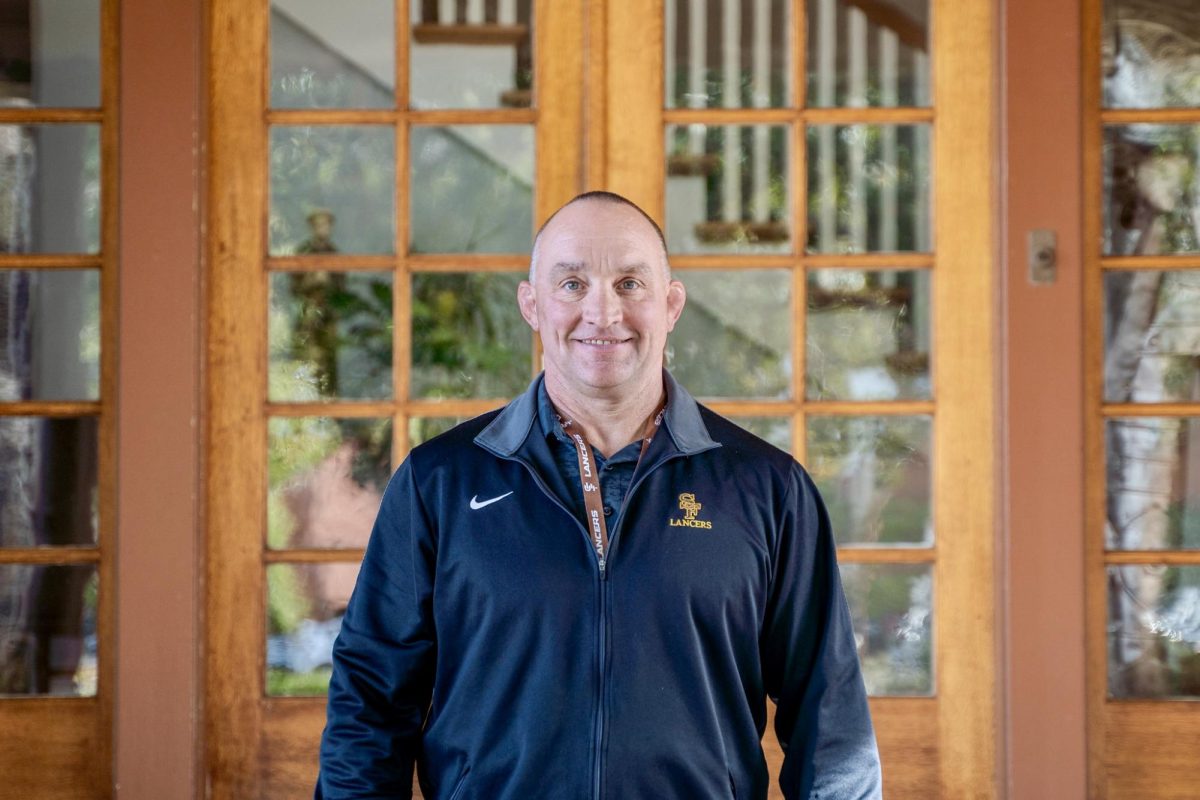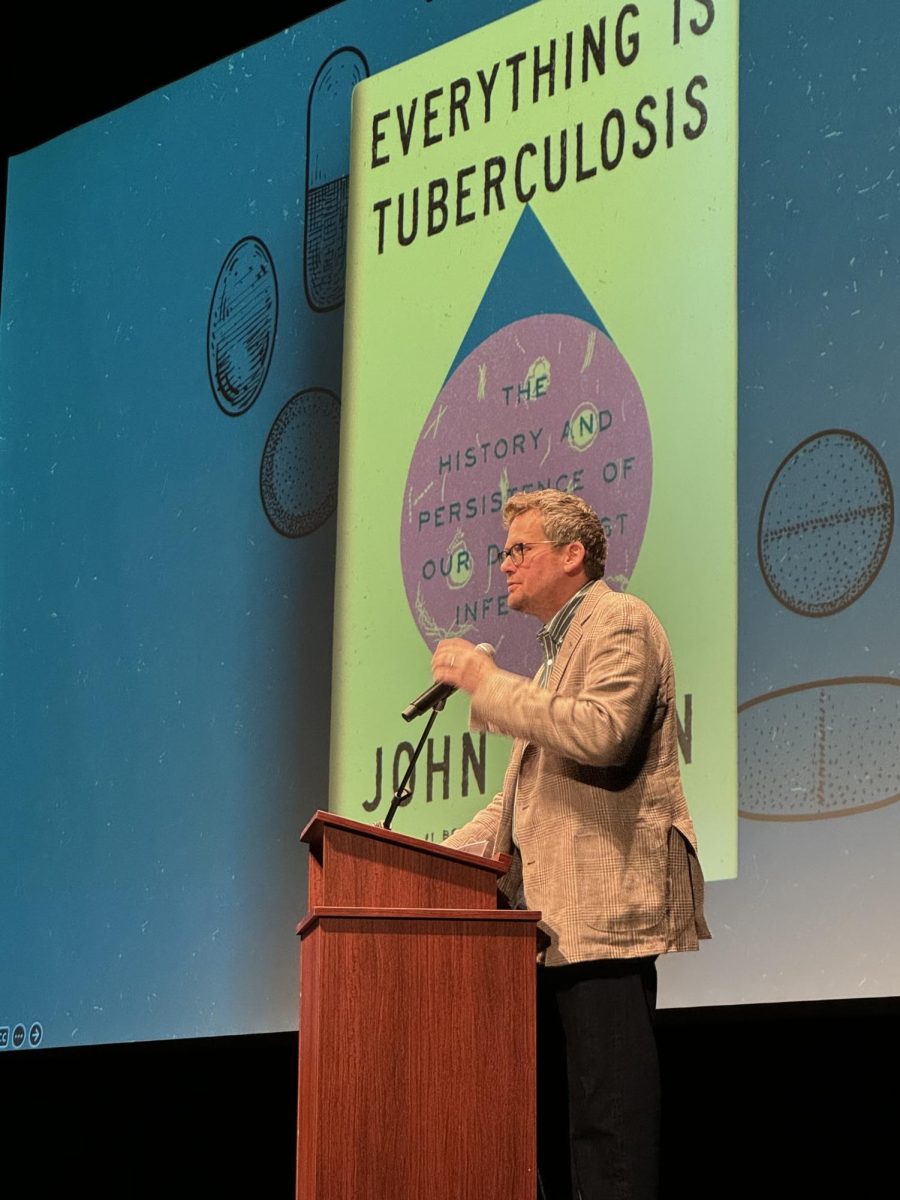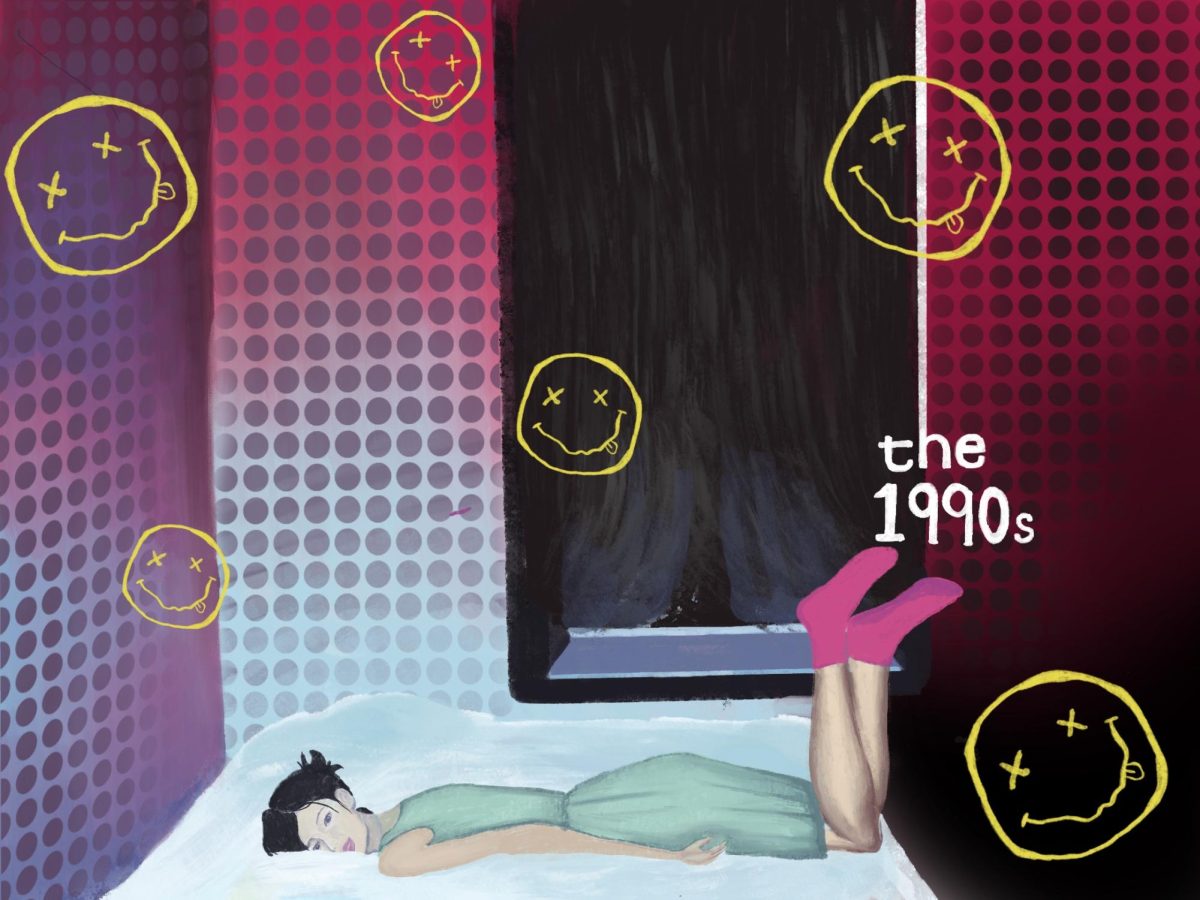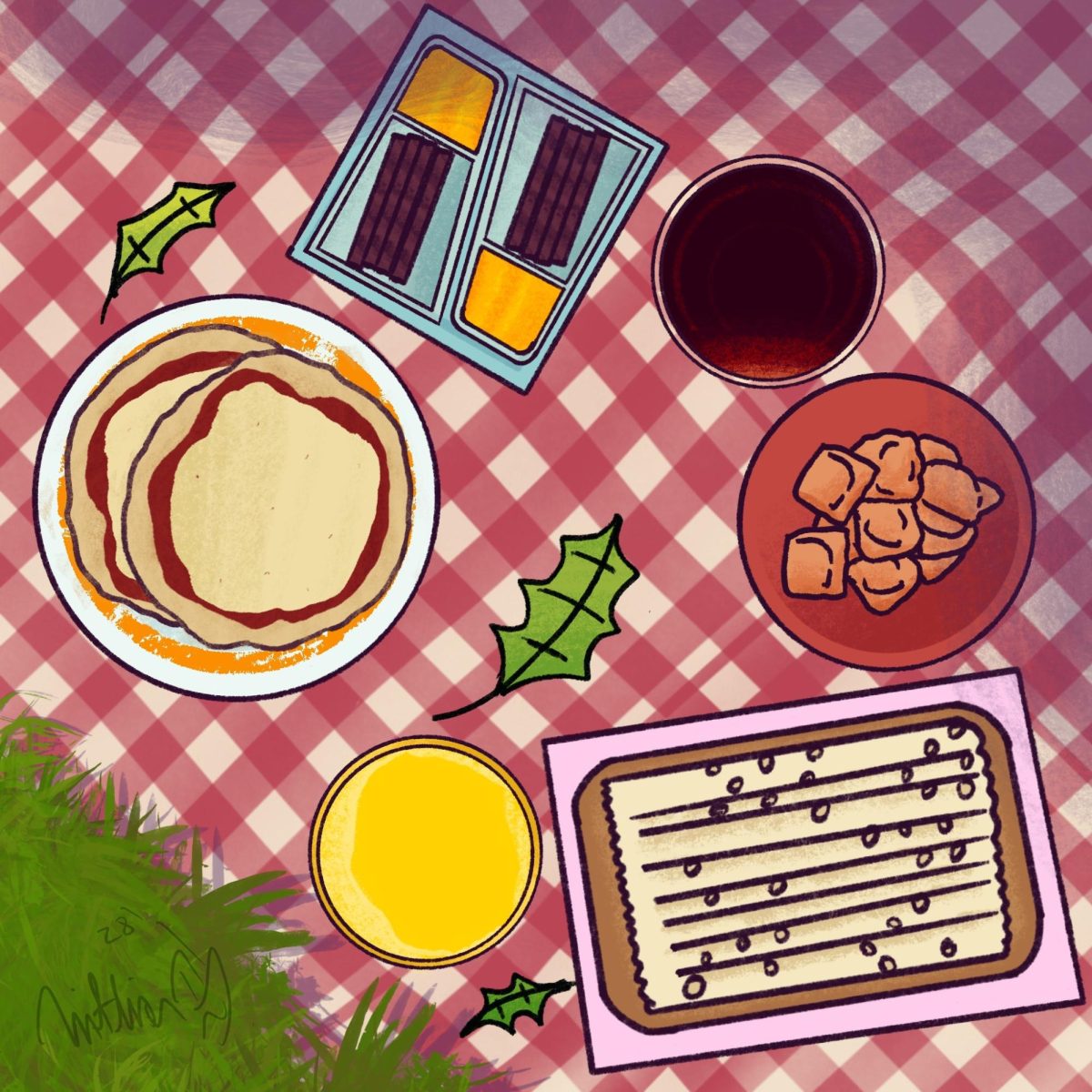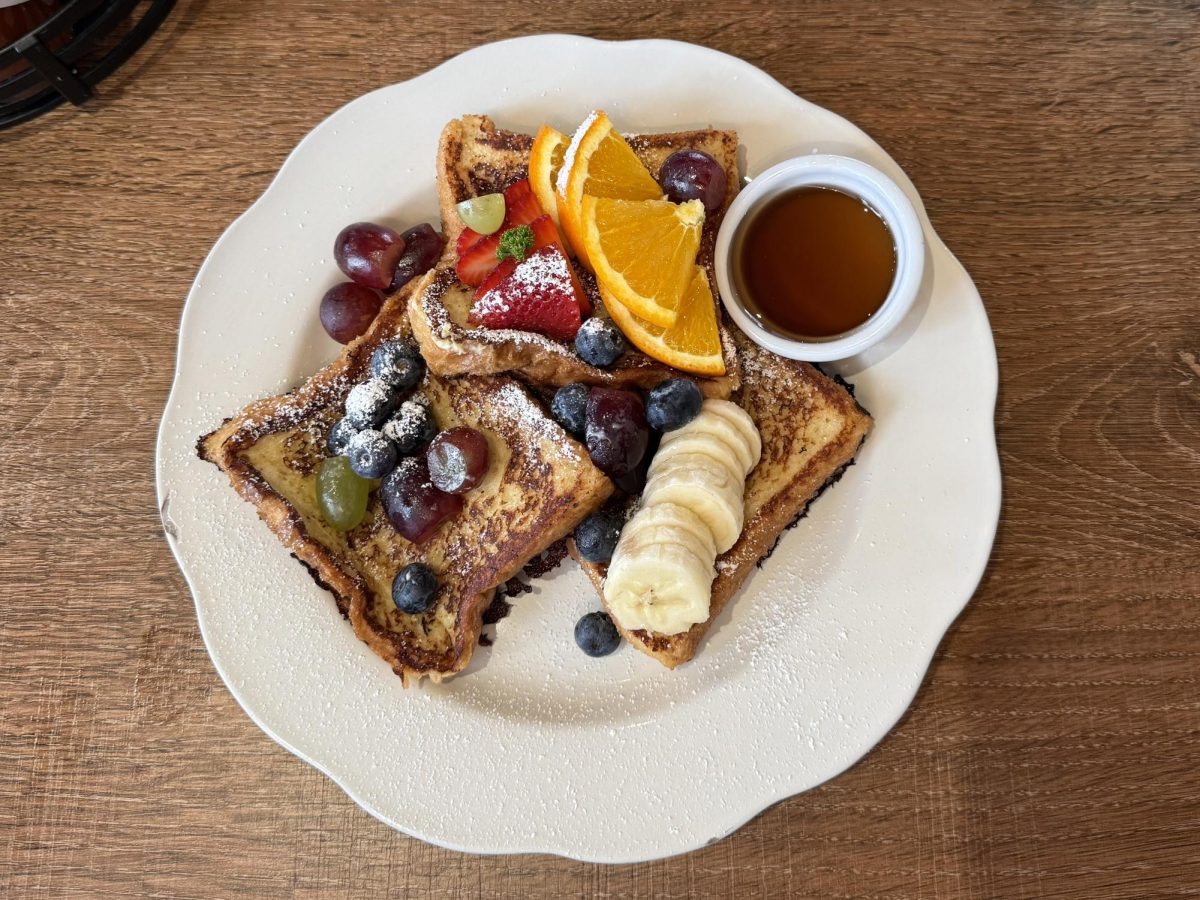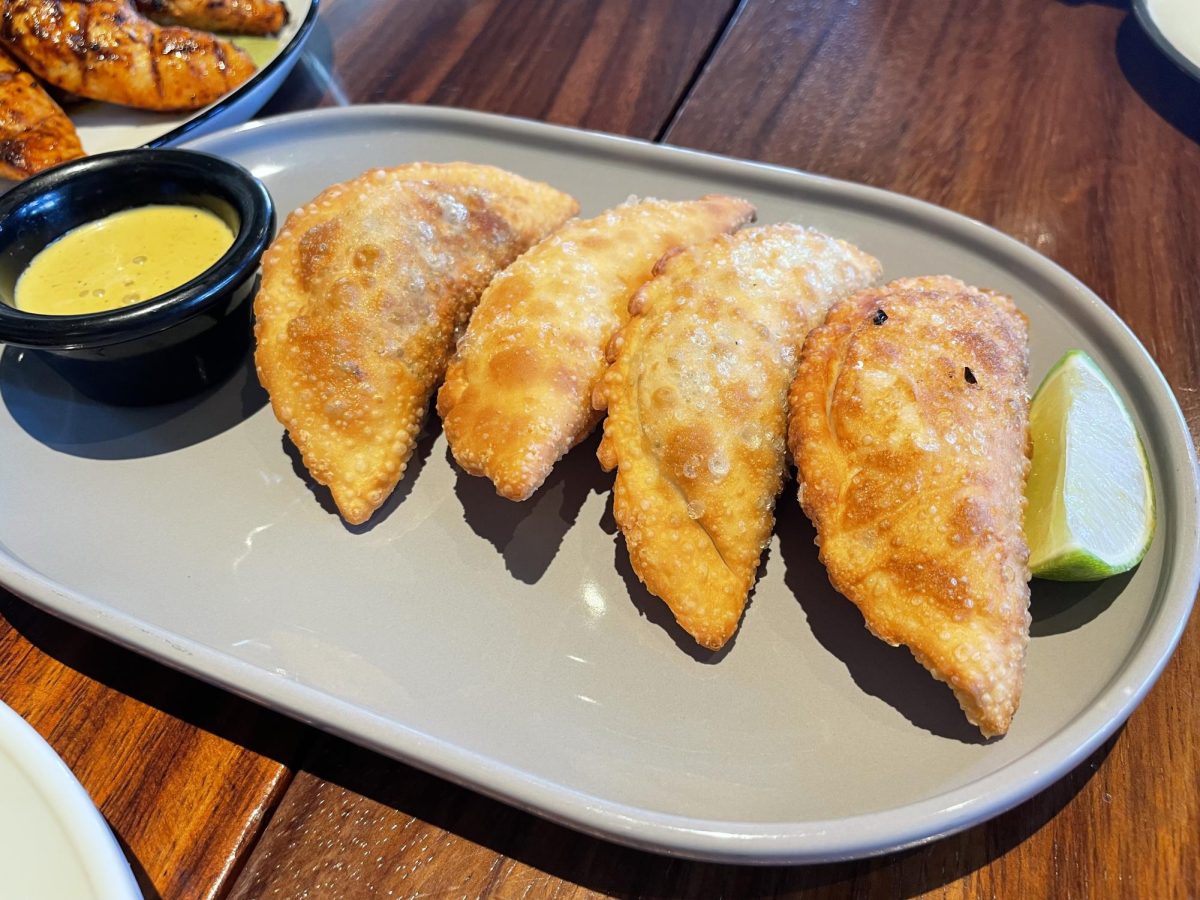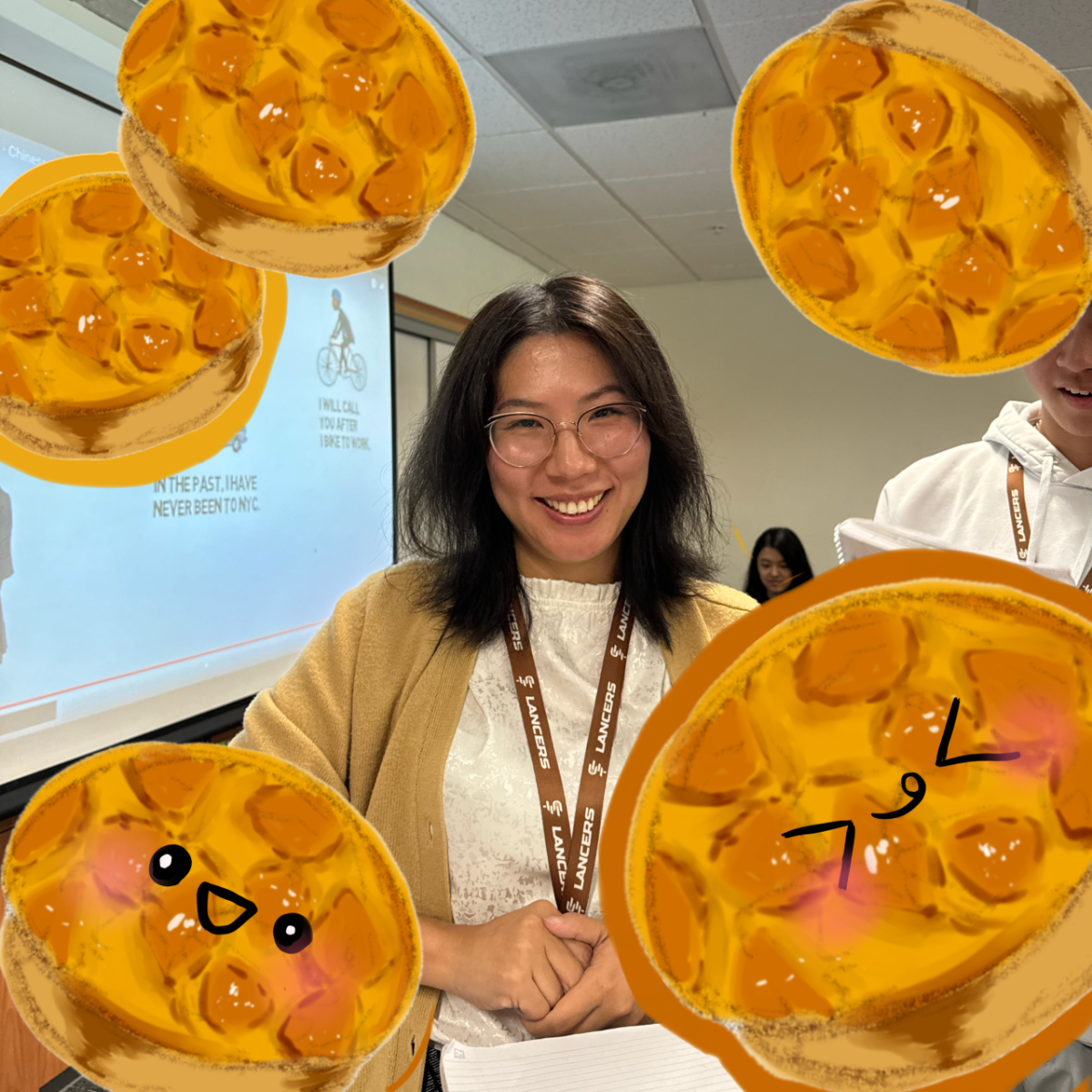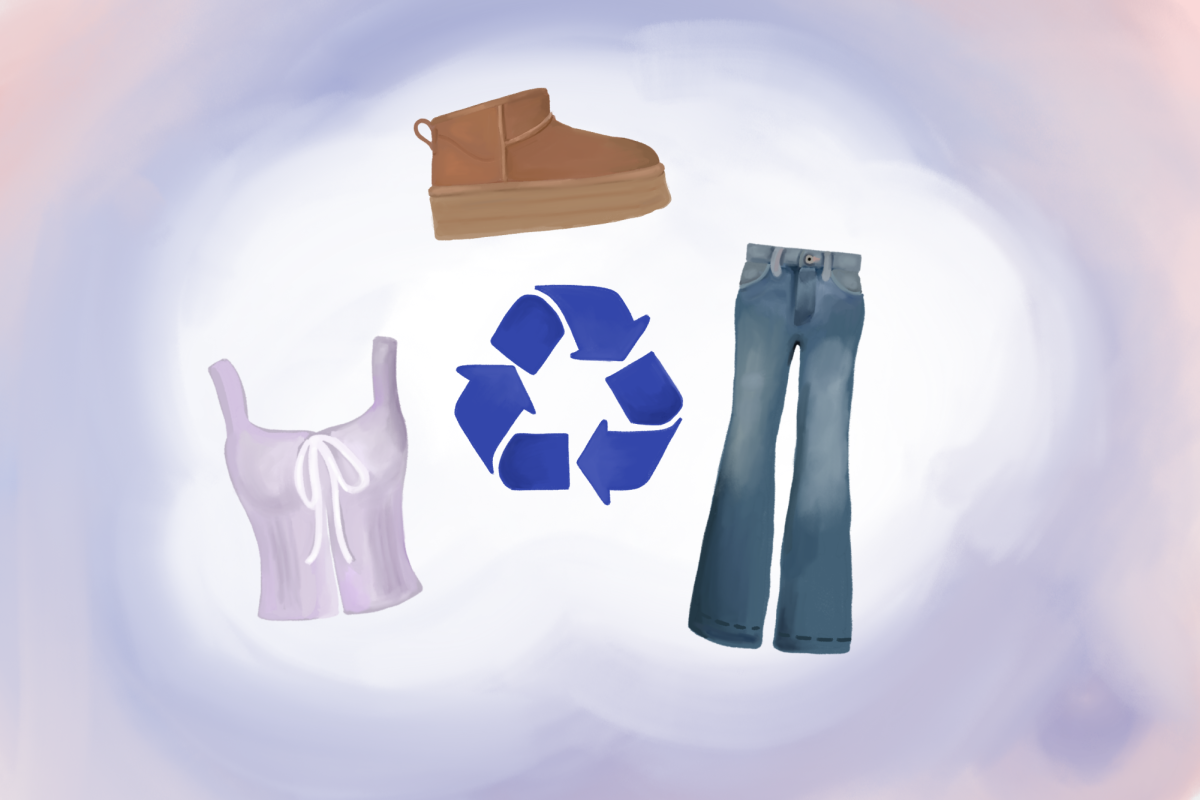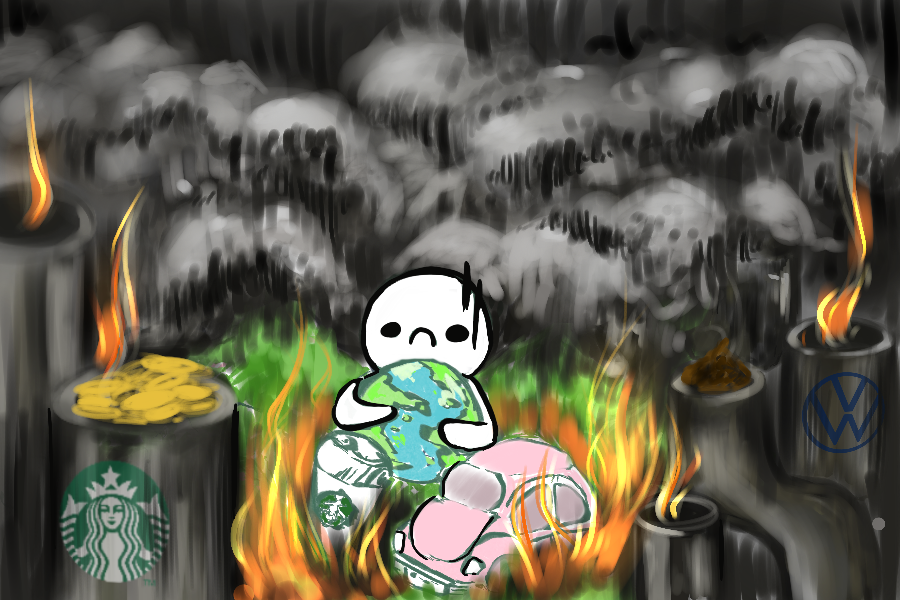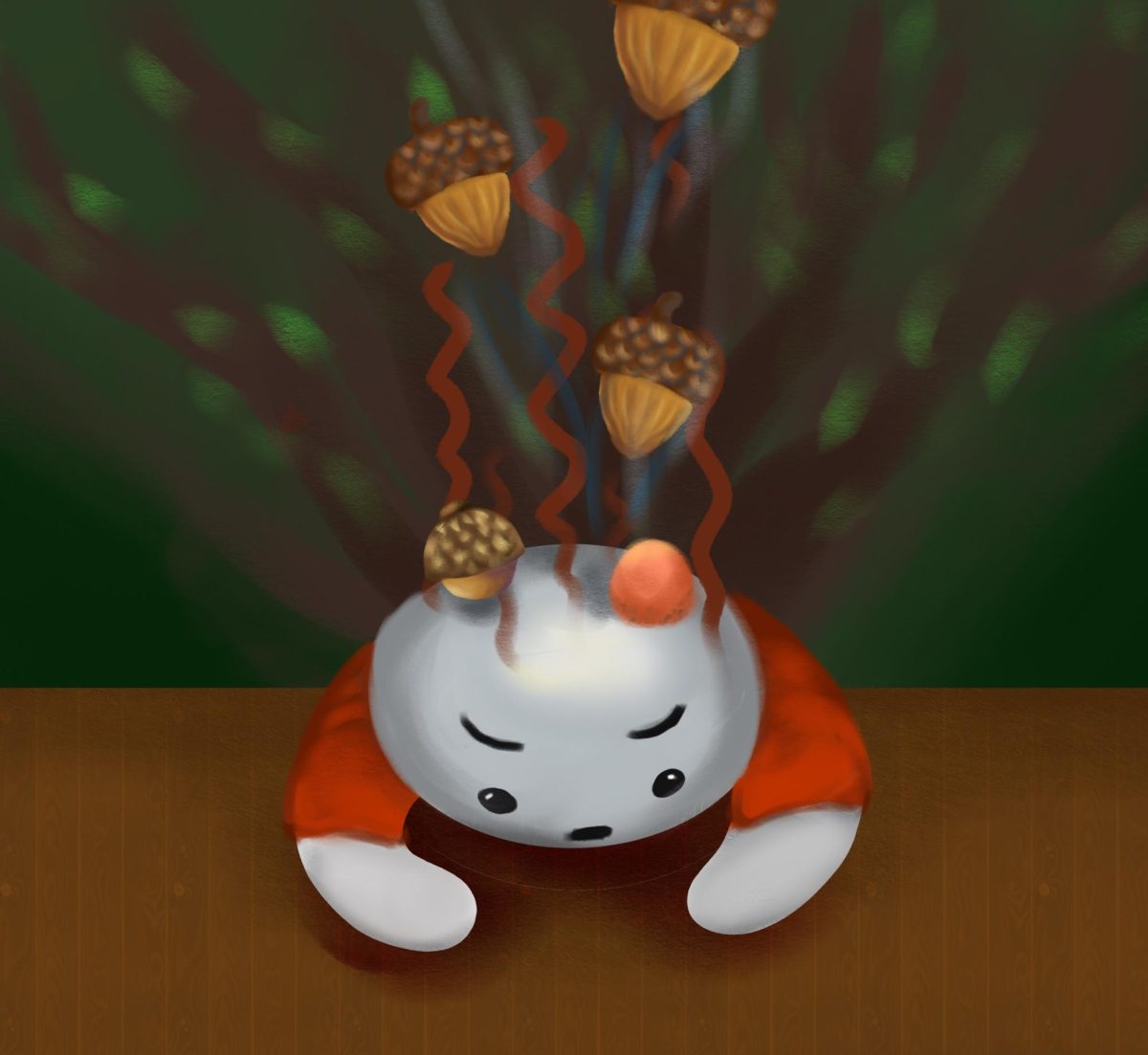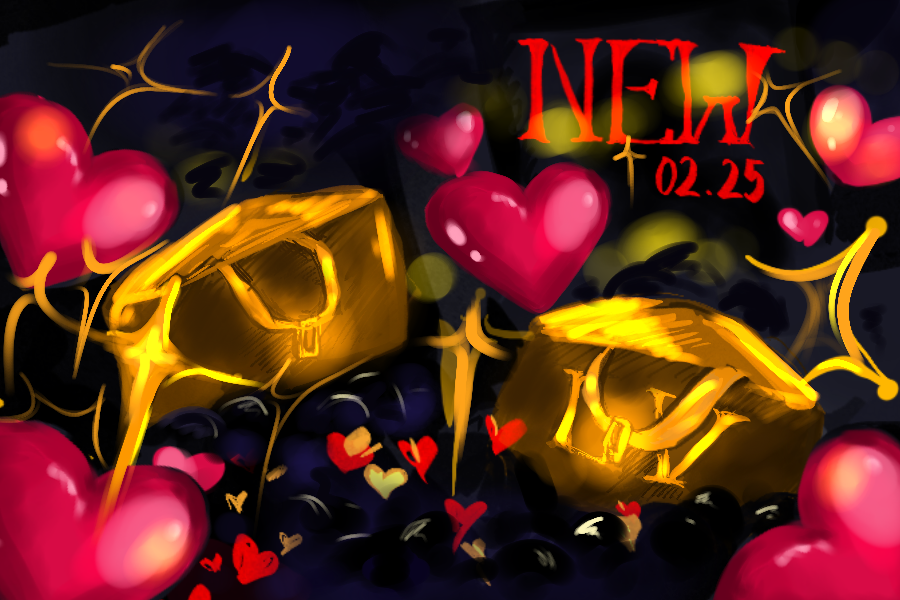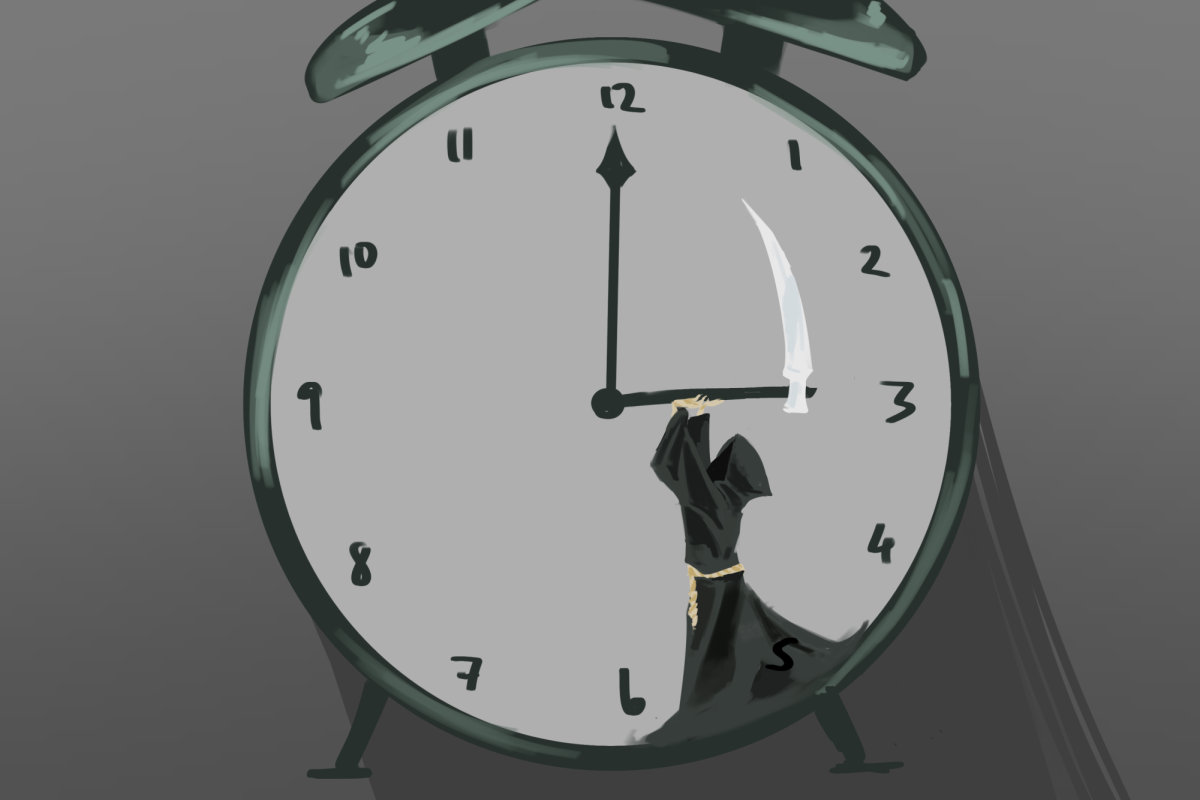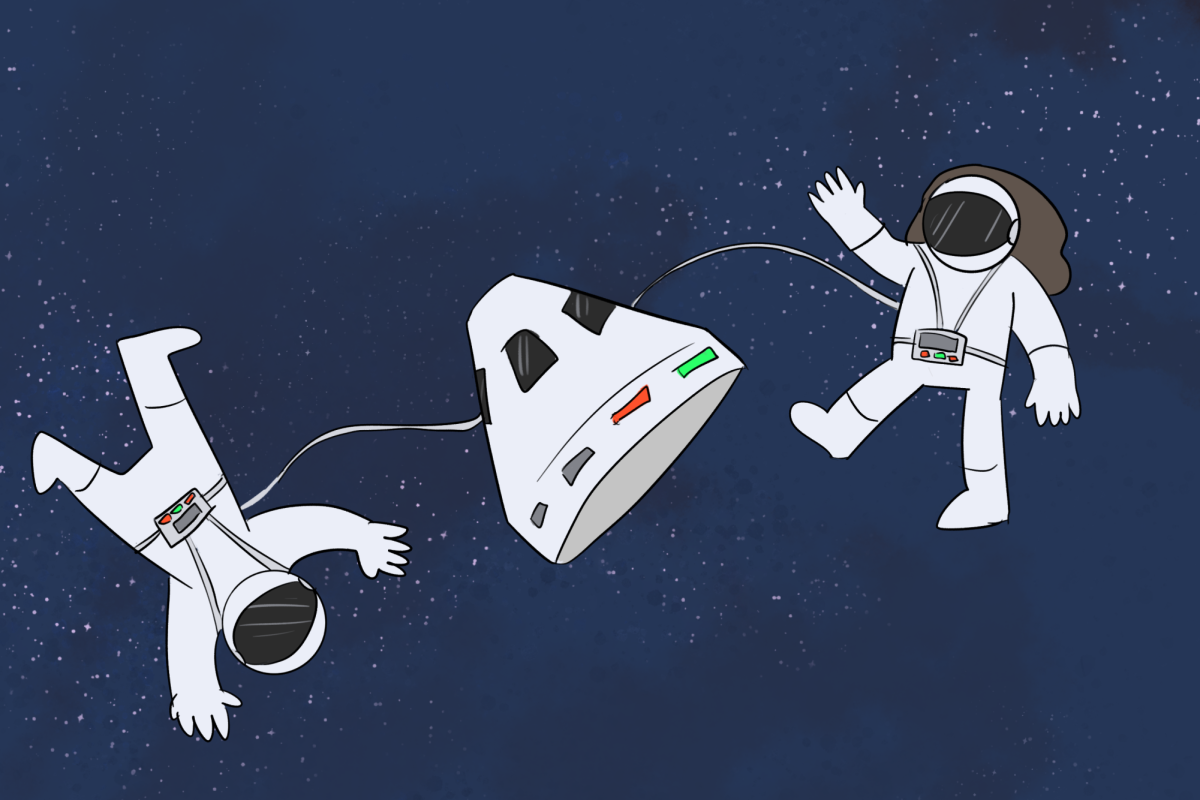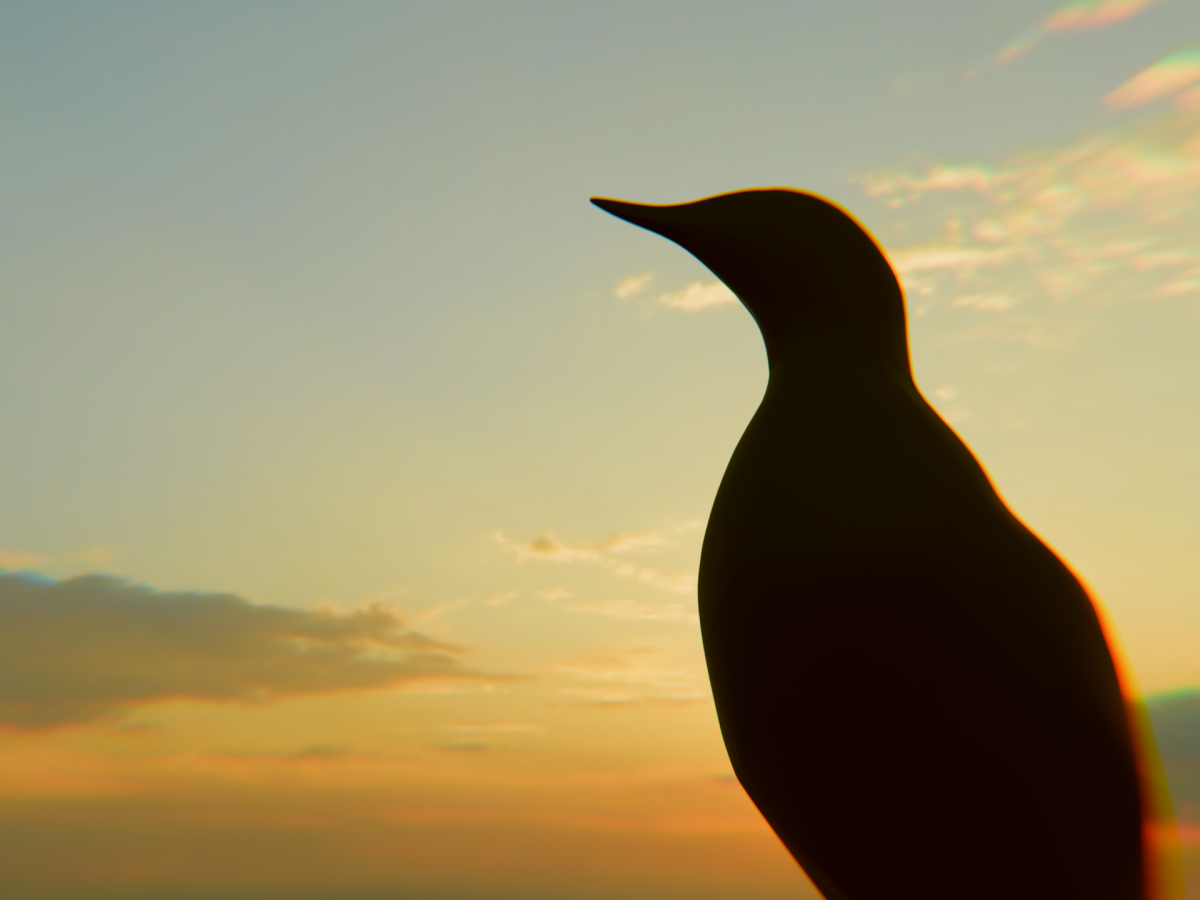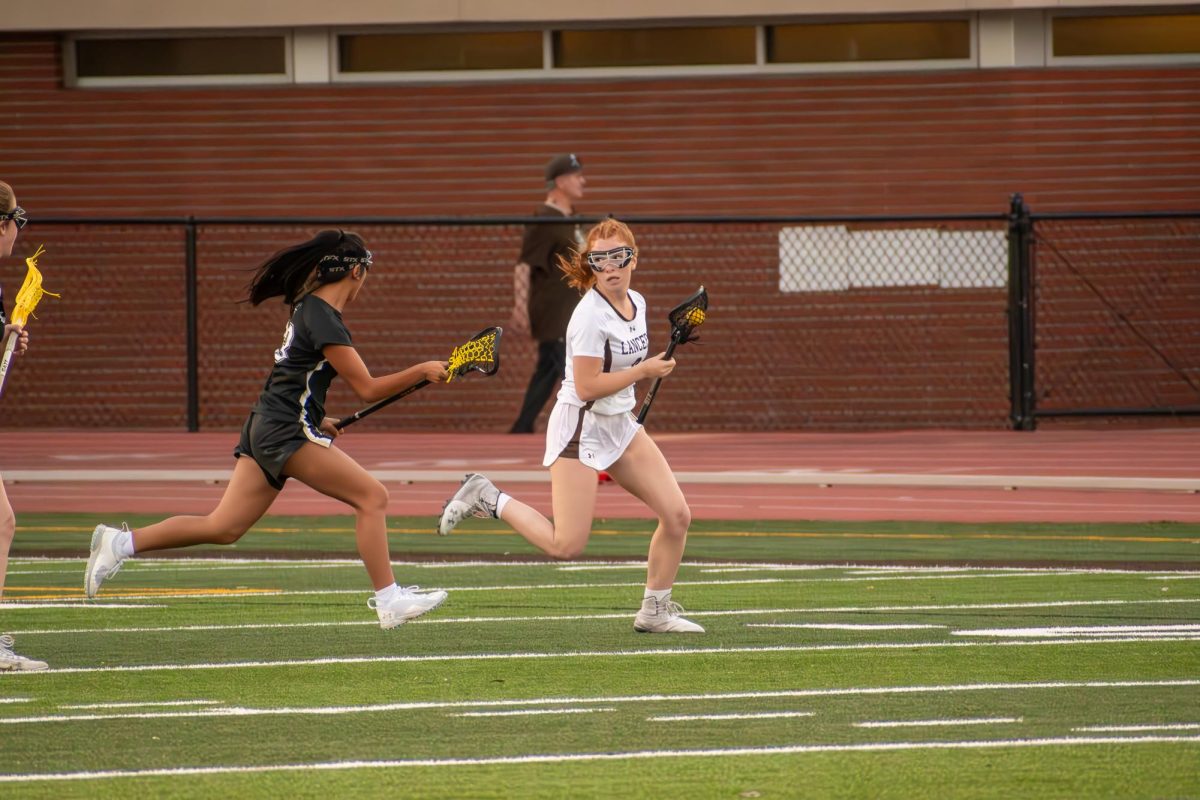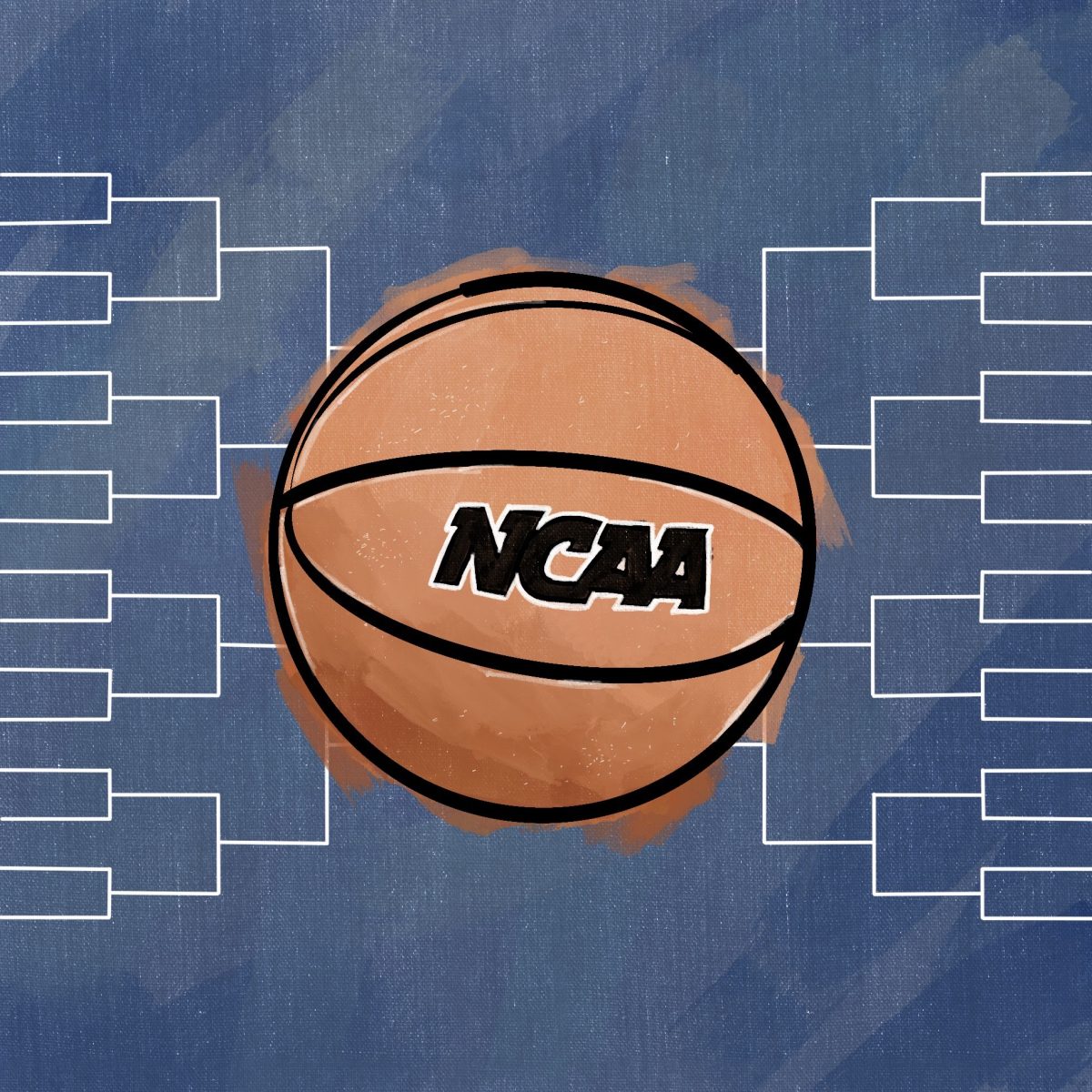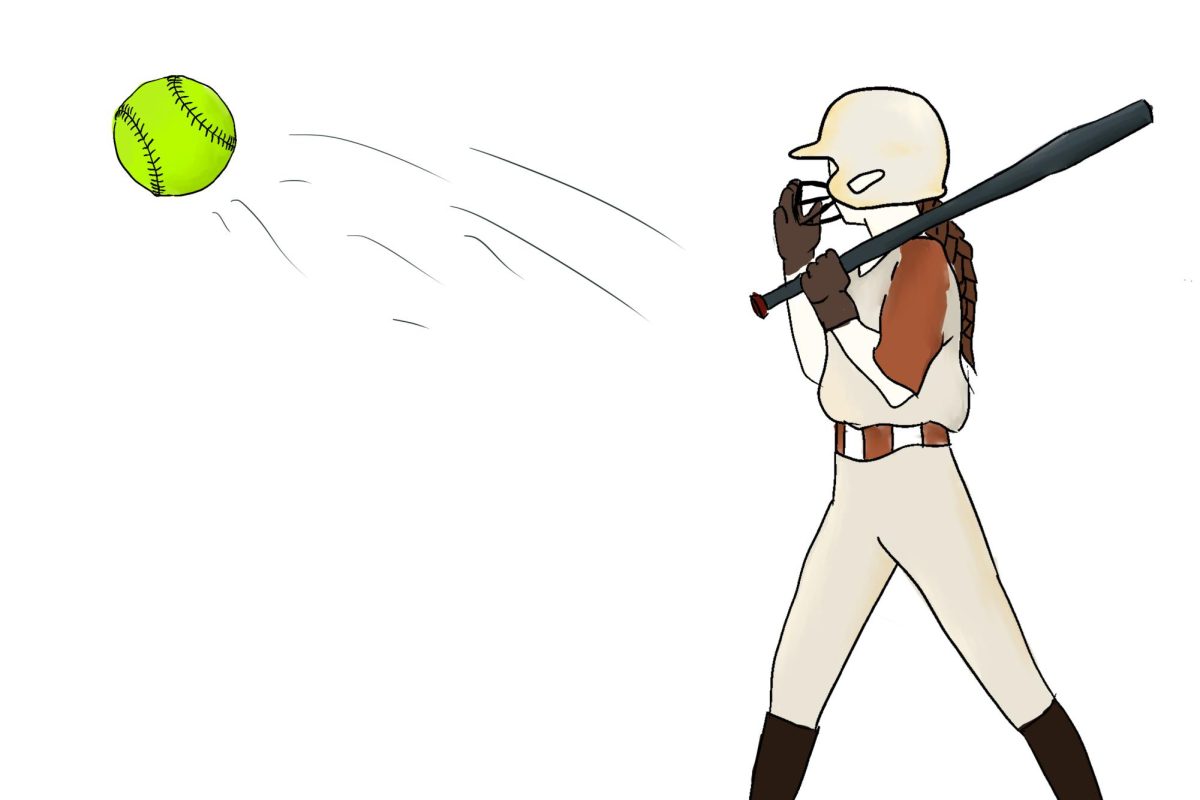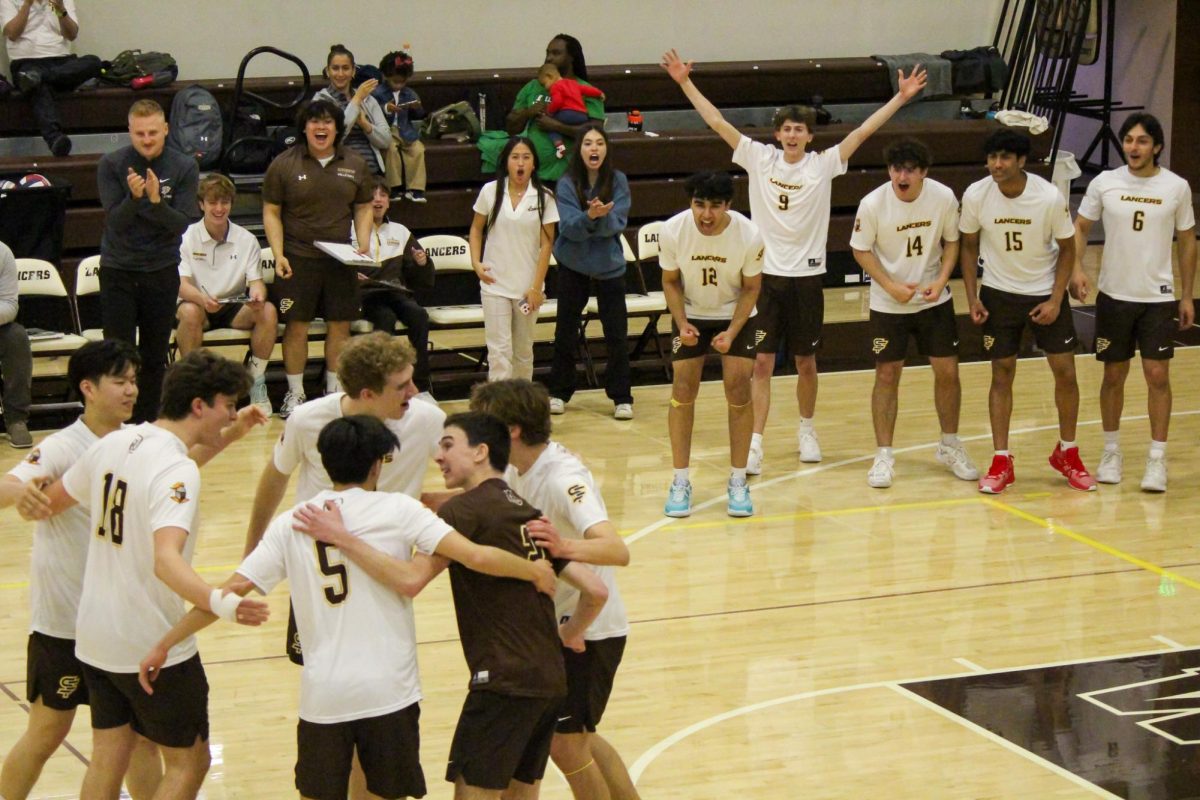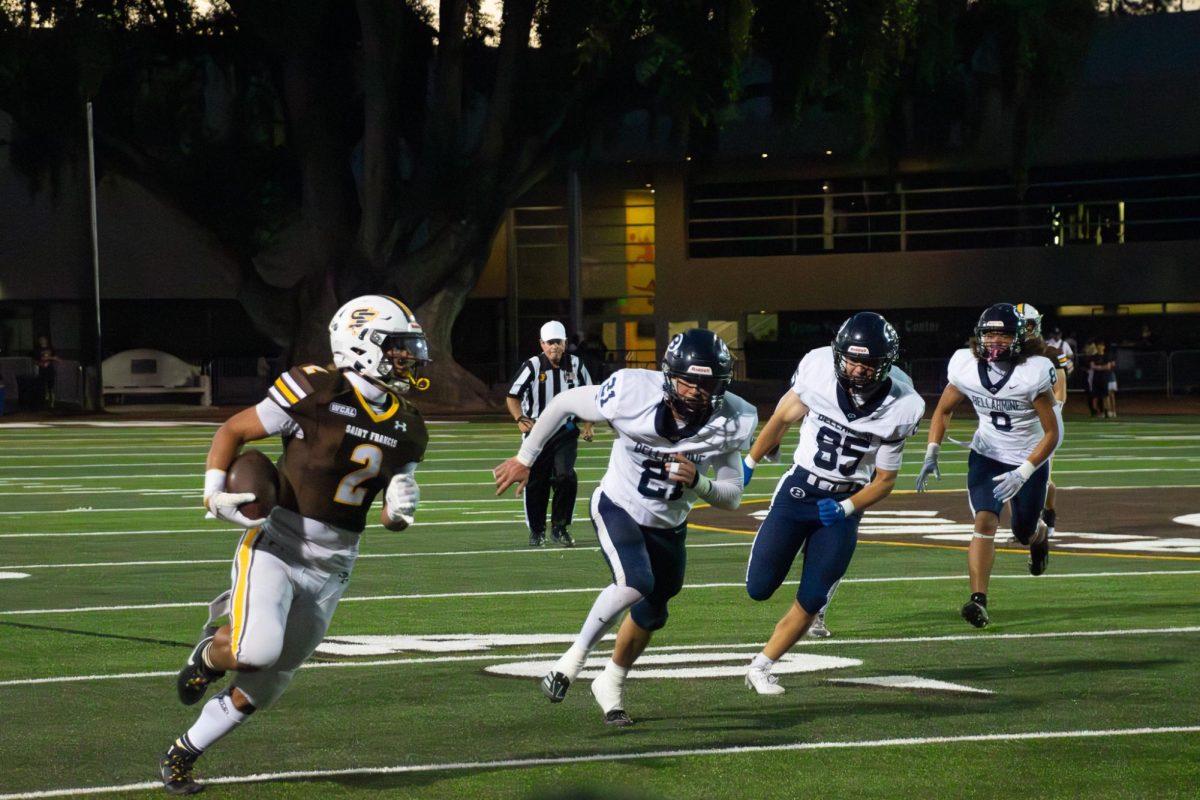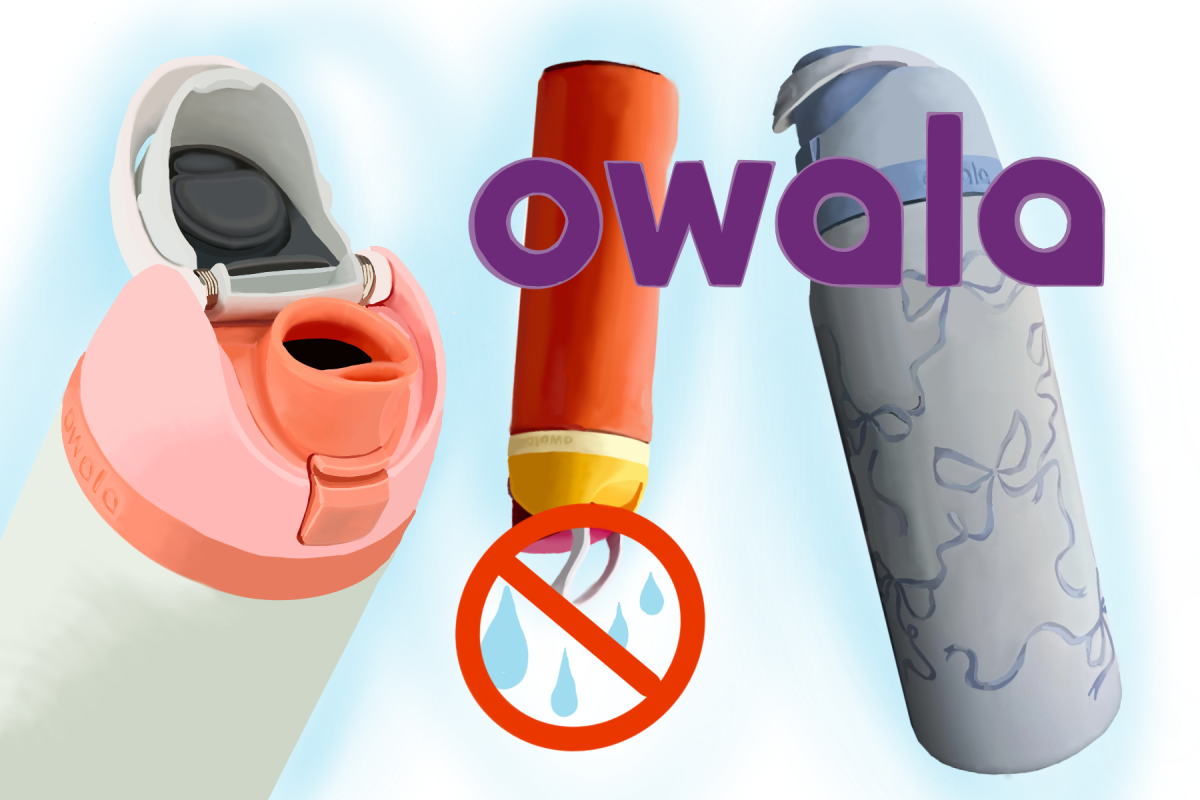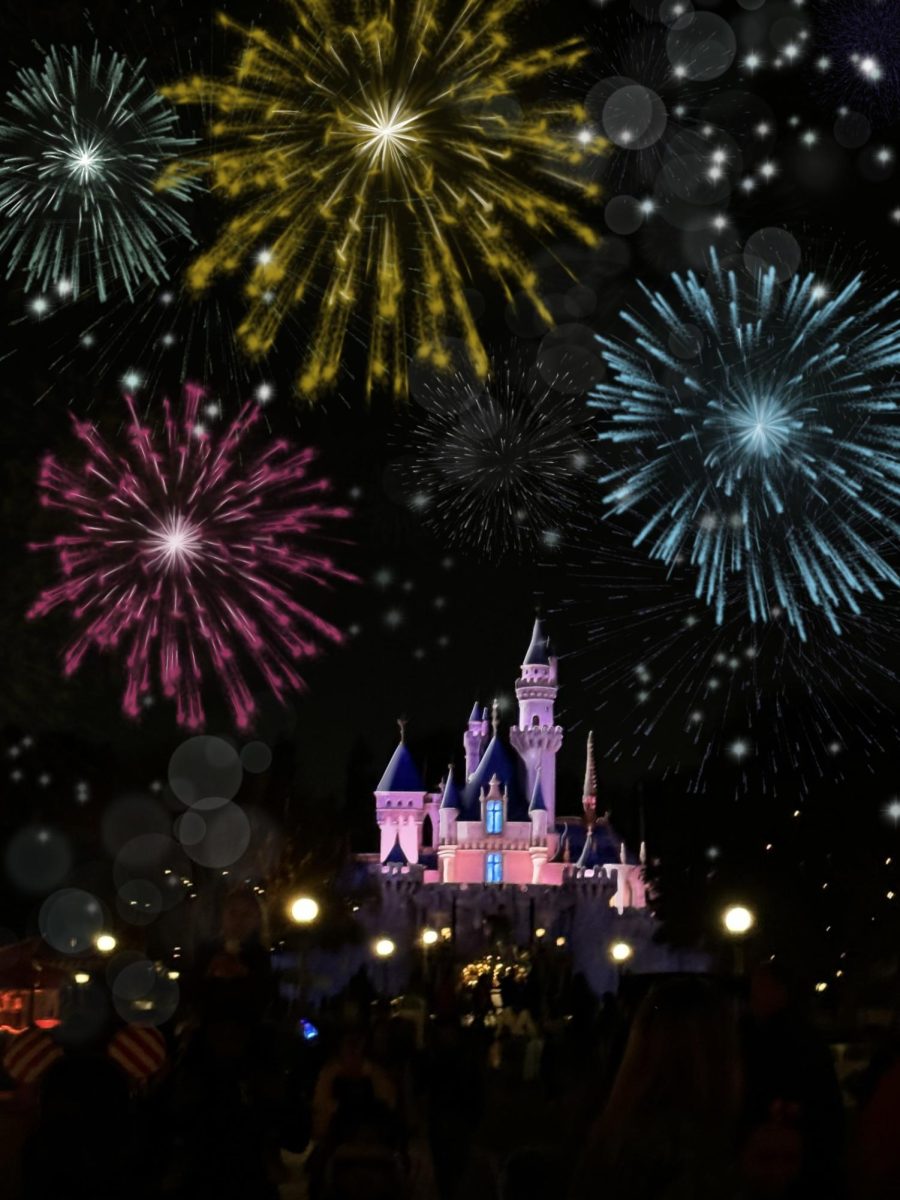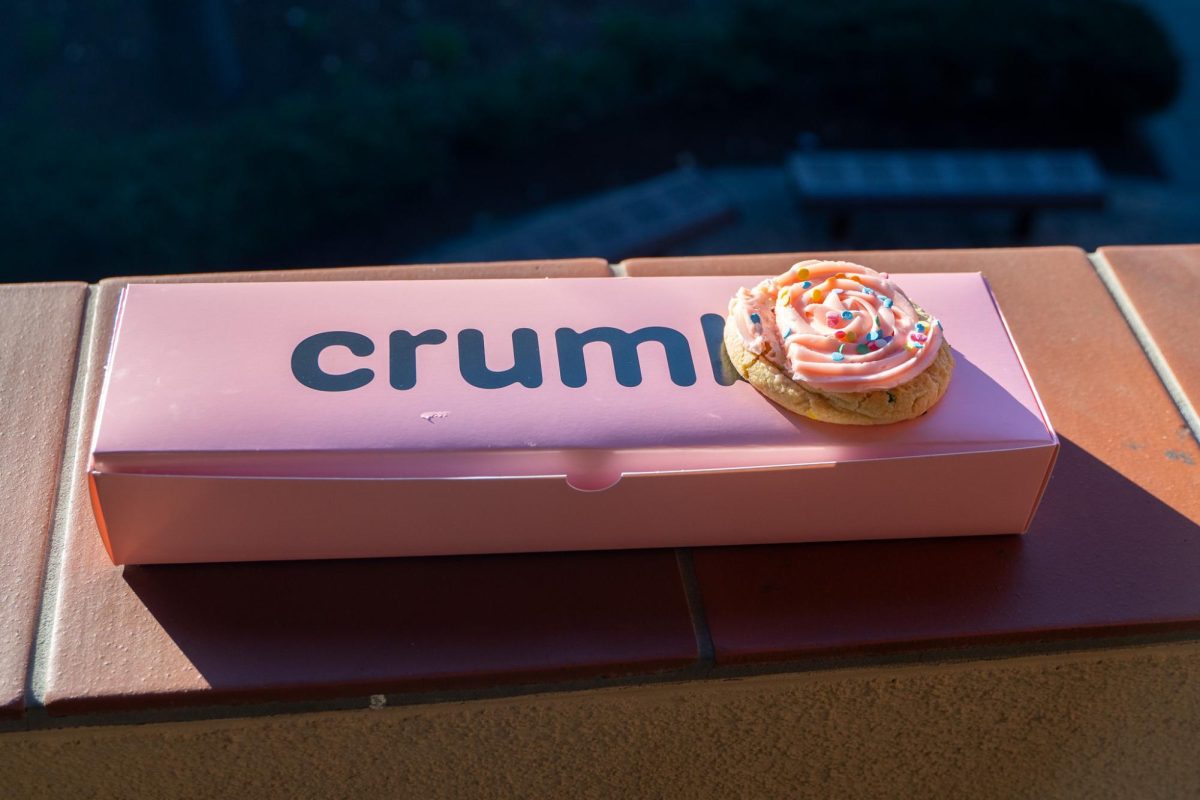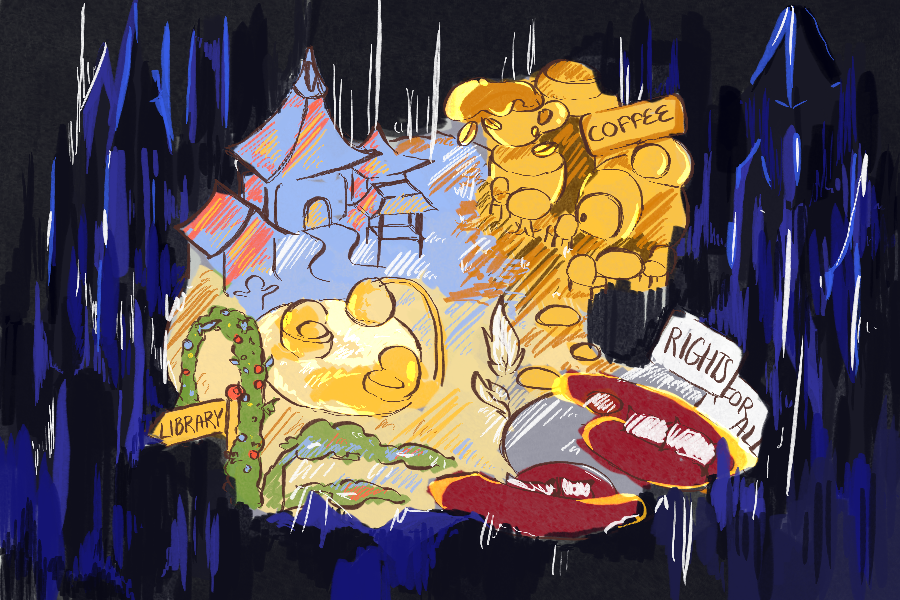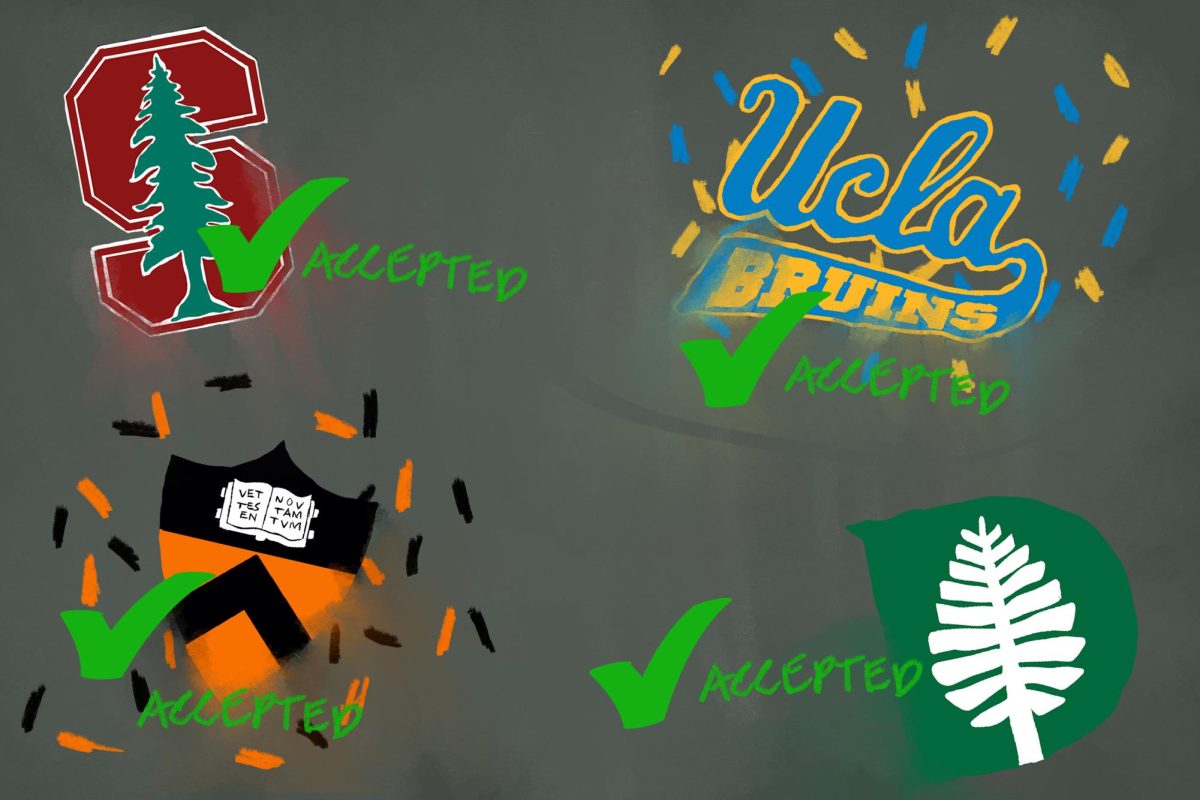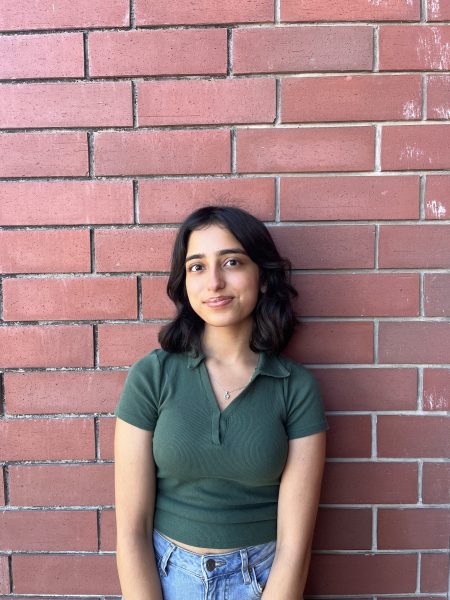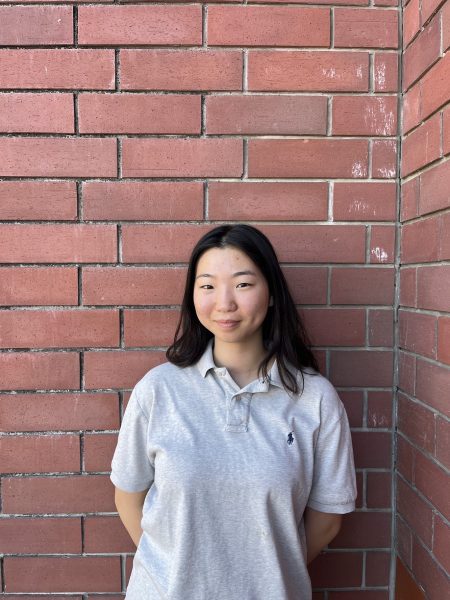From S’wells to Hydroflasks to Stanleys, it seems that each year, there’s a new water bottle taking the world by storm. Friends around me have been raving about the Owala water bottle, so I ultimately purchased an Owala a few months ago. Today, I’m encouraging people to do the same, but how did this water bottle get popular in the first place?
What piqued my interest in the Owala, compared to other competing water bottles, is the FreeSip spout. These lids allow users to either sip or chug water depending on how they feel—whereas competitors typically have one function or the other. CEO Steve Sorensen explained that he conducted market research to determine a pain point for customers: the divide between “straw” people and “spout” people. He intended for the Owala to be the water bottle to encapsulate both functions and patented the FreeSip Spout. Additionally, the FreeSip lid is completely leak-proof, creating a preference for an Owala over the Stanley, as its straw design can create spills. Today, Owala water bottles are available to purchase from their website, Target, Walmart, and Whole Foods.
Owala continues to create rampant demand by emphasizing the release of its new colors and combinations. The water bottle has a very distinct color-blocking combination that people either deeply love or hate. In fact, people intentionally switch the lids of the water bottle in-store and mismatch the original color set to create their own favorite style. This problem has gotten to the point where Owala water bottles have had to be purchased with the assistance of an employer in-store. While there are water bottles with distinct colors available year-round, Owala releases limited edition colors through their Color Drops. These Color Drops sell out within minutes, with each drop being announced only a few days before the sale occurs.
Owala will even partner with brands like Urban Outfitters and Hearth&Hand at Target to create unique prints and textures in limited stock. These limited edition drops create a sense of urgency in buyers, especially with the Urban Outfitters Tied and True Owala—known as the “Bowala” among avid fans for its coquette bow design. The Bowala retailed for $38.00 compared to the same 32-ounce water bottle available on the Owala website, which retails for $32.99 (both these prices exclude shipping). The Bowala sold out within minutes of the release, and resellers marked it up to $138.00. This spike in resale value indicates the intense following Owala has cultivated, and these limited-design Color Drops are more than water bottles: they are also collector items. Owala has built a customer base that craves the exclusivity of a new Color Drop and thus creates consistent demand by having new styles regularly—but not predictably.
The Owala water bottle addresses both functionality and aesthetics as a product, making hydration beyond a necessity and rather an outlet for self-expression and identity. Trends cycle through and it’s likely the Owala will become a fad of the past when another patented water bottle finds its way to the market. Until then, I will continue to enjoy each sip of my Urban Outfitters Tea Time Owala, and take gratification in knowing that I have been swayed by the Owala marketing team.

